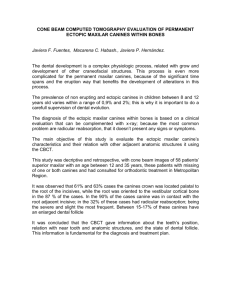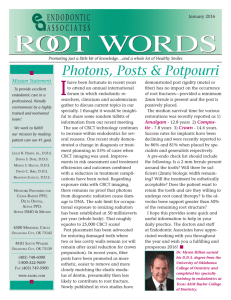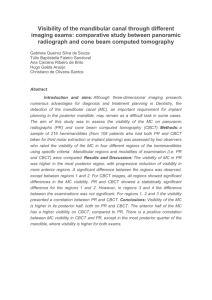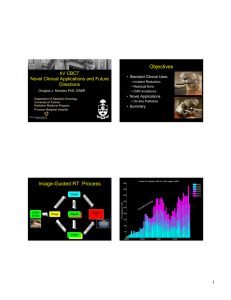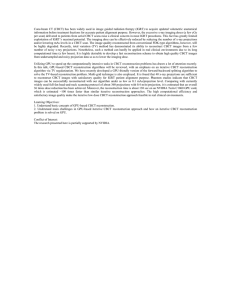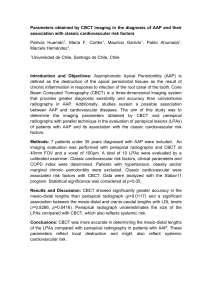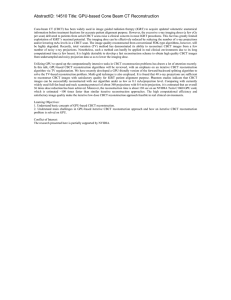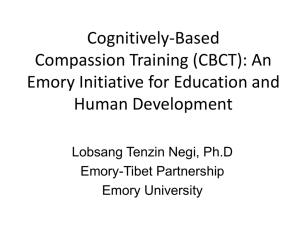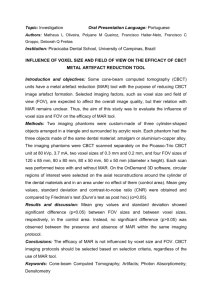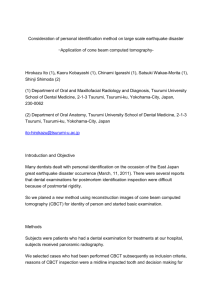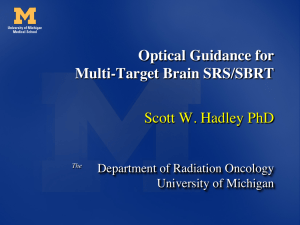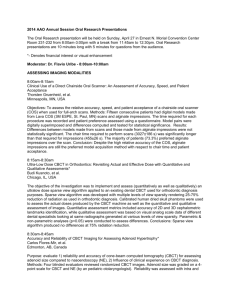Does CBCT change the treatment of ectopic maxillary canines
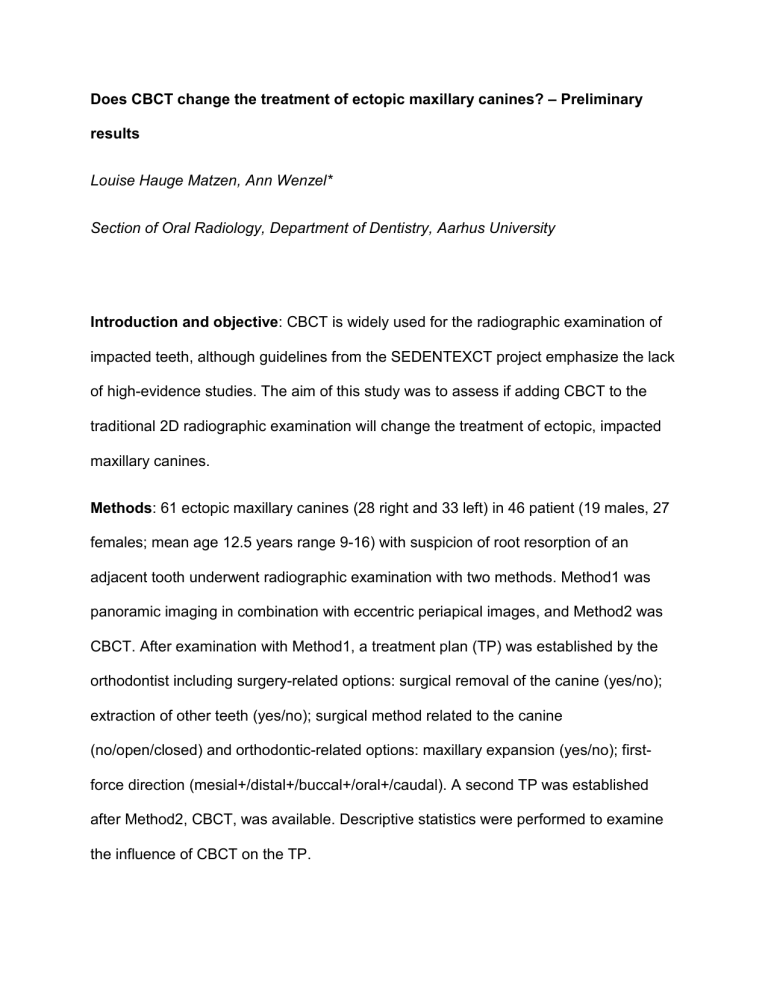
Does CBCT change the treatment of ectopic maxillary canines?
– Preliminary results
Louise Hauge Matzen, Ann Wenzel*
Section of Oral Radiology, Department of Dentistry, Aarhus University
Introduction and objective : CBCT is widely used for the radiographic examination of impacted teeth, although guidelines from the SEDENTEXCT project emphasize the lack of high-evidence studies. The aim of this study was to assess if adding CBCT to the traditional 2D radiographic examination will change the treatment of ectopic, impacted maxillary canines.
Methods : 61 ectopic maxillary canines (28 right and 33 left) in 46 patient (19 males, 27 females; mean age 12.5 years range 9-16) with suspicion of root resorption of an adjacent tooth underwent radiographic examination with two methods. Method1 was panoramic imaging in combination with eccentric periapical images, and Method2 was
CBCT. After examination with Method1, a treatment plan (TP) was established by the orthodontist including surgery-related options: surgical removal of the canine (yes/no); extraction of other teeth (yes/no); surgical method related to the canine
(no/open/closed) and orthodontic-related options: maxillary expansion (yes/no); firstforce direction (mesial+/distal+/buccal+/oral+/caudal). A second TP was established after Method2, CBCT, was available. Descriptive statistics were performed to examine the influence of CBCT on the TP.
Results and discussion : The treatment was performed according to the second TP.
Agreement between the first and second TP was seen in 37 cases (60.7%), while the
TP changed for 24 teeth (39.3%) for one or more treatment options: in one case (4.2%) the canine was removed; in seven cases (29.2%) it changed whether extraction of a neighboring tooth or primary canine was needed; in five cases (20.8%) the surgical method changed; in three cases (12.5%) maxillary expansion was induced; in fifteen cases (62.5%) the force direction changed. Future studies will aim to evaluate which factors have an impact on a change in TP.
Conclusion : CBCT influenced the treatment plan for almost 40% of ectopic, impacted maxillary canines, and first-force direction was the most commonly changed treatment option.
